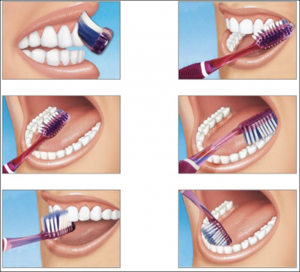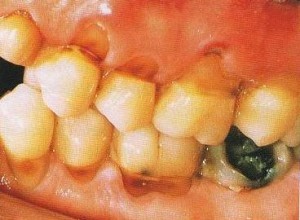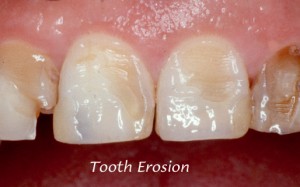1.Proper brushing takes at least two minutes — that’s right, 120 seconds! Most adults do not come close to brushing that long. To get a feel for the time involved, try using a stopwatch. To properly brush your teeth, use short, gentle strokes, paying extra attention to the gum line, hard-to-reach back teeth and areas around fillings, crowns or other restoration. Concentrate on thoroughly cleaning each section as follows:
2.Clean the outer surfaces of your upper teeth, then your lower teeth
3.Clean the inner surfaces of your upper teeth, then your lower teeth










